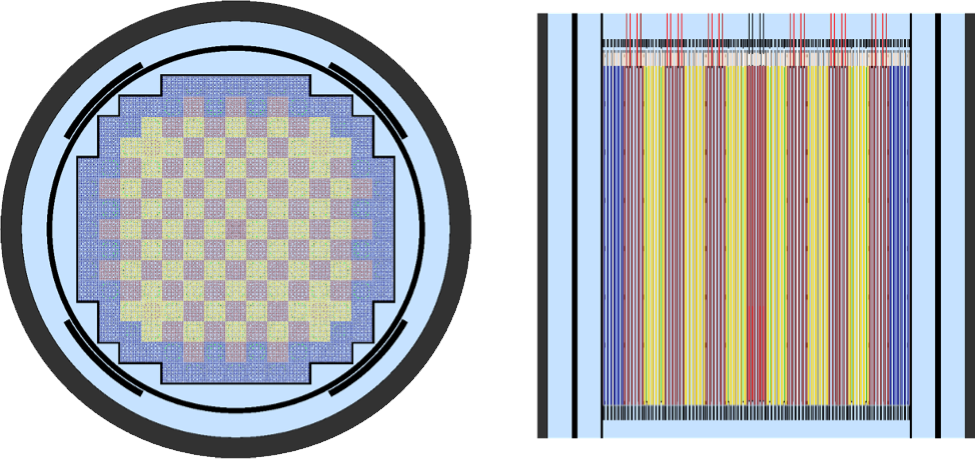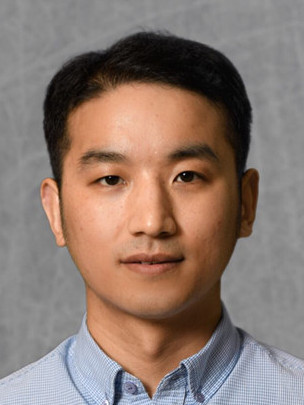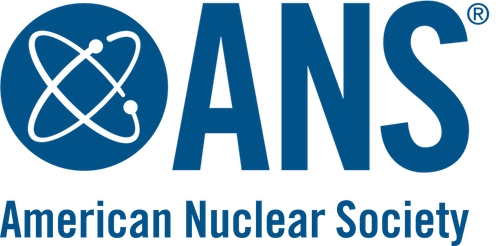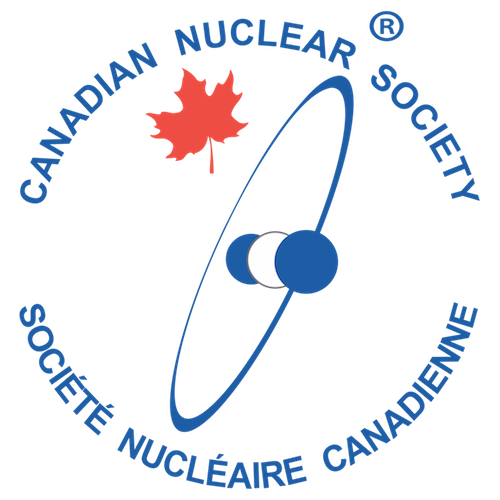Important Dates
Conference ended August 17, 2023
Sunday Workshops / Click here for Thursday Tours
Full Day: 
About OpenMC:
OpenMC is a general-purpose Monte Carlo neutron and photon transport simulation code. It is
capable of simulating 3D models based on constructive solid geometry with second-order
surfaces as well as CAD-based geometries using the DAGMC library. It also has built-in
capabilities for activation/depletion to track material evolution with time. OpenMC was originally
developed by members of the Computational Reactor Physics Group at the Massachusetts
Institute of Technology starting in 2011 with a specific focus on high performance computing and
has now evolved into a community developed code with contributions from many institutions.
This workshop will present a brief overview of the code and its growing list of features as well as a walk-through on how to set up input files for nuclear reactors using the Python API. The workshop will also demonstrate how to leverage OpenMC’s Python API in combination with widely-adopted Python packages for post-processing of results.
Participants should bring their laptop to follow along and run OpenMC. A link will be provided to access the software on a cloud computing platform.


 About the Presenter:
About the Presenter:
Dr. Patrick Shriwise is Assistant Computational Scientist in the Particle Transport Research Group of the Computational Science (CPS) division at Argonne National Laboratory. He performs research in OpenMC, an open-source continuous-energy Monte Carlo radiation transport code used widely in academia and national labs. His work in OpenMC involves visualization enhancement, advanced particle tracking techniques, and the representation of arbitrarily complex 3D geometry for multiphysics applications.
Patrick is an active developer of the Direct Accelerated Monte Carlo (DAGMC) toolkit, a library for representing CAD-based geometry in Monte Carlo applications, which is now being extended to method of characteristics radiation transport solvers as well. His work in DAGMC involves optimizing the underlying ray tracing process, which is critical for ensuring robust particle transport for nuclear systems in which high geometric fidelity is essential, such as fusion energy systems and high-energy physics devices. He is currently pursuing GPU-accelerated ray tracing as part of the General Purpose Raytracing Toolkit (GPRT) for computational work to further accelerate transport in these systems.
Half Day: ARIANT
About ARIANT:
ARIANT is a generalized, one-dimensional, non-equilibrium, two-fluid, two-phase system thermalhydraulics code.
The range of application includes, but is not limited to, pressurized heavy water power reactors (PHWR), and
nuclear and electrically heated experimental test facilities.
The code supports a variety of coolants, including H2O, D2O, molten salts (LiF-BeF2, NaBF4-NaF, LiF-NaF-KF, and NaF-ZrF4),
liquid metals (Potassium (K) and sodium (Na)) and noncondensable gases (Air, N2, H2, Ar, He, CO2).
ARIANT can simulate two-phase flows and heat transfer over a wide range of temperature and pressures, including both sub- and supercritical pressures. The primary focus of development has been on the analysis of the consequences of postulated upset scenarios in CANDU reactors. The code has also been successfully applied to a wide range of problems from test facilities (e.g., RD-14M, CWIT, LOBI, etc.). ARIANT is currently being revised to support applications in Small Modular Reactors such as the molten salt or the high temperature, gas cooled reactors. ARIANT incorporates various modules enabling the user to perform complete simulations of power plants or experimental facilities. For example, a highly detailed heat transfer module enables the user to model a fuel bundle in three dimensions to any desired resolution. The code includes a point neutron kinetics model for basic neutronics calculations; however, it can also be interfaced with third party codes to develop a more detailed representation of core physics. ARIANT incorporates a complete control system module that provides all the necessary tools required to simulate the control systems in a power plant such as various trip functions, controls required for power maneuvering.
ARIANT was written in the Fortran 95/2000 language and as a result is highly modularized. ARIANT also uses dynamic memory allocation, which means the problem size is only limited by the size of local computer memory. The code employs a fully-implicit numerical integration scheme using Newton’s iterative method. ARIANT is being developed by the Thermalhydraulics and Safety Analysis Branch (TSAB) of the Advanced Reactors Directorate (ARD), which is part of CNL's Science and Technology (S&T) Organizational Unit.
 About the Presenter:
About the Presenter:
Dr. Nusret Aydemir is a senior scientist at the Canadian Nuclear Laboratories (CNL) based in Chalk River. He leads a group of professional engineers and scientist as the lead developer of the CATHENA family of reactor simulation codes, including the next generation thermalhydraulics code, ARIANT. His experience spans over three decades in fluid dynamics, heat transfer and numerical methodologies as applied to nuclear thermalhydraulics. He is the technical lead in several CNL projects, providing guidance to multi-disciplinary teams in the development and assessment of the ARIANT family of codes (ARIANT, ARIANT3D, ARIANT/NESTLE-C, ARIANT/ASSERT). Dr. Aydemir’s selected segments of non-proprietary work were published in over 50 refereed journal papers and international conferences.
Half Day: Scientific Machine Learning for Nuclear Engineering Applications
About Machine Learning:
Machine Learning (ML) is a subset of Artificial Intelligence (AI) that studies computer algorithms which improve automatically through experience (data). ML algorithms typically build a mathematical model based on training data and then make predictions without being explicitly programmed to do so. Its performance increases with experience, in other words, the machine learns. Deep learning (DL) is a subset of ML that uses multi-layered artificial neural networks (ANNs), also called deep neural networks (DNNs), that can automatically learn representations from data without introducing hand-coded rules or human domain knowledge. This is called automatic feature extraction. AI/ML/DL have achieved tremendous success in tasks such as computer vision, natural language processing, speech recognition, and audio synthesis, where the datasets are in the format of images, text, spoken words and videos. Meanwhile, their applications in engineering disciplines mostly focus on scientific data, which resulted in a burgeoning discipline called scientific machine learning (SciML) that blends scientific computing and ML. SciML consists of computational technologies that can be trained with scientific data to augment or automate human skills. Typical examples for SciML are physics-informed neural networks, ML for uncertainty/sensitivity analysis and ML-based surrogate modeling.
Examples of SciML development in Nuclear Engineering are Data-driven Modeling (DDM) and Digital Twins (DTs), driven by advanced ML algorithms, increasing computational power and easier access to data. In this workshop, we will have five presentations that cover a wide range of topics, from fundamentals of DNNs on an educational perspective to most recent developments in SciML in various Nuclear Engineering areas.
 About the Presenter:
About the Presenter:
Dr. Xu Wu is Assistant Professor of Nuclear Engineering at North Carolina State University. His research interests include Uncertainty Quantification, Sensitivity Analysis, Calibration, Validation and Scientific Machine Learning. Dr. Wu received his PhD degree in Nuclear Engineering from University of Illinois at Urbana – Champaign in 2017. Prior to joining NC State in 2019, he was a Postdoctoral Research Associate at Massachusetts Institute of Technology.
Half Day: IAEA Nuclear Reactor Simulators
About the IAEA Simulators:
In support of human resource development in Member States the IAEA has established education and training programmes on active learning about nuclear technologies using the basic principle simulators. These simulators provide insight and understanding of reactor designs as well as a clear understanding of the operational characteristics of the different reactor types. The simulators operate on personal computers and are provided for a broad audience of technical and non-technical professionals, students and instructors as an introductory educational tool. The application of the simulator programs is limited to providing general response characteristics of selected types of power reactor systems and they are not intended to be used for plant-specific purposes such as design, safety evaluation, licensing or operator training.
For more than 20 years, the IAEA has been using the educational simulators to enhance the understanding of physics and technology of various types of designs, and successfully conducted over 50 training courses and workshops. This workshop aids in understanding the physics and technology of BWRs and small modular reactors (integral PWR design) including nuclear reactivity control, thermodynamics, stability and control in steady state and in dynamic situations, technology design and safety system design. Through the demonstration of educational simulators, the workshop participants will be able to apply these concepts to understanding the behaviour and response to normal operation and abnormal conditions in a nuclear power plant and improve their knowledgeable about the design and function of key safety systems.
 About the Presenter:
About the Presenter:
Dr. Alexei Miassoedov graduated in theoretical and experimental physics from the Moscow State Engineering Physics Institute in 1989 and joined the Russian Research Center Kurchatov Institute, Moscow, where he has been engaged in modeling of fission products release from irradiated fuel. After receiving his PhD in mechanical engineering at the University of Karlsruhe in 1996 he joined the Institute for Material Sciences at KIT. From 1996 to 2018 he worked primarily in the field of reactor safety and severe accident research, including LWR fuel behavior under severe fuel damage conditions, core melt progression phenomena, in- and ex-vessel melt retention and related material behavior processes. Since 2018 he works as a nuclear engineer in the Nuclear Power Technology Development Section, Division of Nuclear Power, Department of Nuclear Energy at the International Atomic Energy Agency.
Tours
McMaster Nuclear Reactor
The McMaster Nuclear Reactor is a multipurpose reactor located at the McMaster University campus in Hamilton, Ontario. Having operated since 1959, the 5 MW reactor was the first university-based research reactor in the British Commonwealth and continues to perform research and produce medical isotopes.
Subject to scheduling, the tour may also include a tour of the McMaster Accelerator Laboratory also located on the university campus and host to a suite of low energy accelerators.
Stern Laboratories
Stern Laboratories located in Hamilton, Ontario specialises in the design and construction of experimental facilities to evaluate reactor heat transport systems, safety systems, and components.



